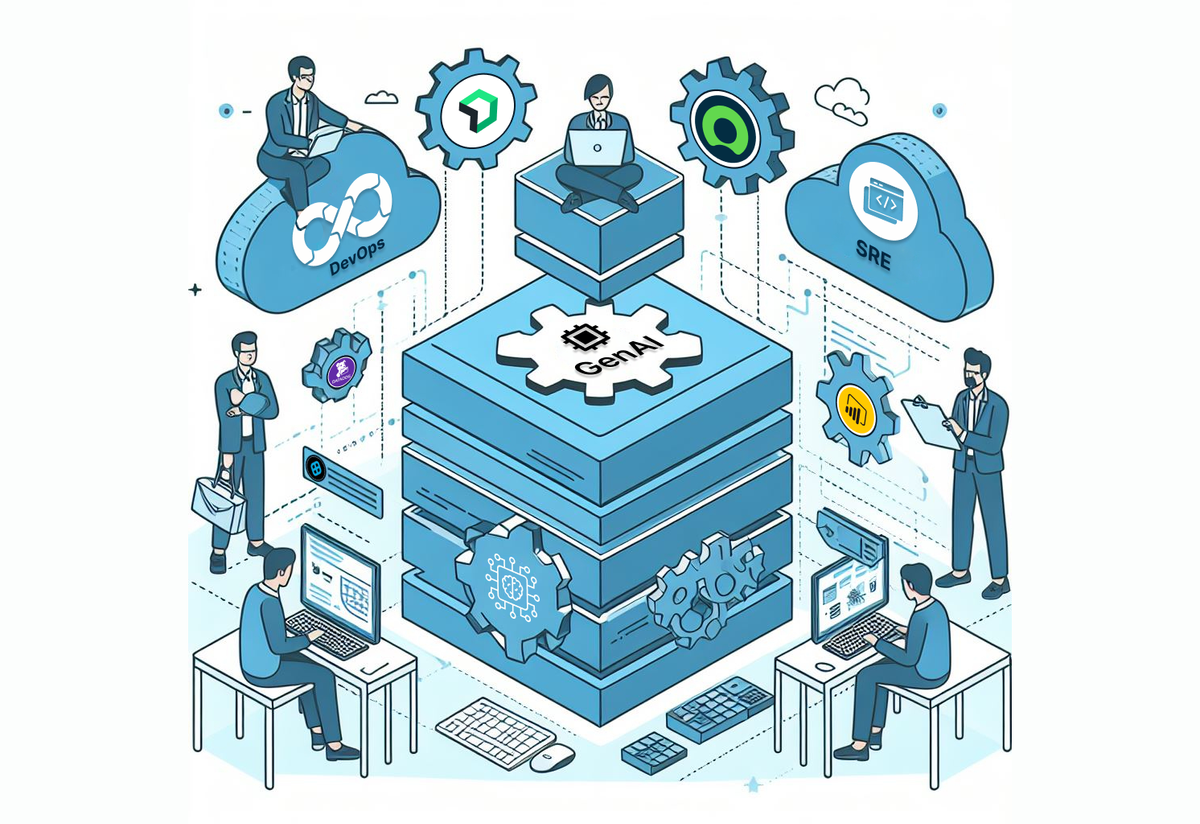Introduction:
Large Language Models(LLMs) are revolutionizing the software industry at a rapid pace. They are reshaping everything from code and system architecture to programming methodologies, communication norms, and even organizational hierarchies. By empowering developers to generate code, documentation, and various software components with greater efficiency and precision, these models are fundamentally altering the way software development operates. This shift in approach is not only streamlining tasks but also freeing up cognitive resources for developers, allowing them to focus more on higher-level problem-solving and creative endeavors. As a result, developers are expected to transition into roles that emphasize system design and architectural planning, marking a significant evolution in their professional trajectories.
How does this apply to the DevOps and SRE:
1.Querying Different Tools: -
DevOps and SRE professionals can use LLMs to query a variety of tools for logs, observability data, and other outputs efficiently. By using natural language prompts, engineers can find the information they need without mastering multiple tools, saving time and effort.
Integrating OpenAI's conversational AI capabilities into Power BI, a popular data visualisation and business intelligence tool, enables users to interact more intuitively, asking questions and receiving insights through a conversational interface.
2.Generating Reporting from Incident Data: -
LLMs can automatically link out to additional context as needed, aiding in incident response by providing real-time insights into the root cause of incidents, thus improving incident resolution time and customer satisfaction.
New Relic Grok, a generative AI assistant helps users to ask straightforward questions in a chat interface, and it will respond with detailed analysis, suggested fixes, and the root causes of any issues. It can translate complex queries and dashboards into plain language that everyone can understand. For example, if we ask “Why is my service not working?” to the New Relic Grok, it will analyze piles of telemetry data and recent changes to identify the root cause.
Datadog introduces Bits AI, a generative AI–powered DevOps copilot that can help you investigate and respond to incidents more efficiently across the Datadog web app, mobile app, and Slack, without switching contexts. With a unified conversational interface, Bits AI aggregates insights from diverse sources within your environment. It correlates crucial data across the Datadog platform, such as anomalies detected by Watchdog, metrics, events, real-user transactions, Security Signals, and cloud costs. Moreover, Bits AI aids in issue resolution by suggesting automated code fixes, generating synthetic tests, and identifying relevant Datadog workflows for activation.
3.Analyzing Data and Summarizing: -
LLMs can assist in analyzing vast amounts of data from monitoring systems, identifying patterns, anomalies, and correlations that may be challenging for humans to detect, and enhancing observability and system understanding.
Javis, an AI-powered virtual agent integrated into ServiceNow, is available to assist users with a range of inquiries. Users can seek troubleshooting support for Outlook connection issues, request assistance with VPN errors indicating access denial, or ask for guidance on changing internet proxy settings. Javis is adept at providing technical solutions and relevant instructions tailored to the user's needs. Moreover, users can tap into Javis's knowledge base for general inquiries, such as identifying states along Route 66 or learning about the top five YouTubers and their earnings.
Davis CoPilot is a feature within Dynatrace's Davis AI that leverages generative AI capabilities to provide recommendations, create workflows, and dashboards, and assist users in exploring and solving tasks using natural language input.
Harness has unveiled AIDA (AI Development Assistant), which can analyze log files and connect error messages with known issues. Additionally, it offers natural language capabilities for creating governance policies regarding cloud assets and expenses. AIDA can also autonomously detect security vulnerabilities and produce code fixes.
Challenges faced for applying AI into DevOps and SRE:
1.Data Quality Issues:
AI tools rely on quality data to deliver reliable insights. Data may be unclean, unstructured, or siloed across different systems, hindering the effectiveness of AI. Implementing robust data management and governance practices is crucial to ensure clean, structured, and accessible data for AI tools.
2.Underestimating the Need for AI Expertise: -
Implementing AI is not just about buying and deploying a tool. It requires a deep understanding of AI and machine learning principles, as well as the ability to interpret the results correctly.
3.Integration with Existing Systems: -
AI tools need to seamlessly work with existing IT systems, tools, and processes. Integration issues can prevent AI tools from accessing necessary data or functioning as expected. Careful planning of the integration process is essential to ensure compatibility with existing systems.
4.Compliance and Security Concerns:
The use of AI tools, especially those leveraging cloud computing, may raise concerns about data security and compliance with regulations. Conducting a thorough risk assessment before implementing any AI tool is essential to address compliance and security issues.
In conclusion, the integration of Large Language Models (LLMs) and generative AI into DevOps and Site Reliability Engineering (SRE) practices presents a transformative shift in IT operations. These technologies offer diverse advantages such as streamlined incident management, enhanced automation, efficient data analysis, and improved communication. Despite facing challenges like data quality issues, the need for AI expertise, integration complexities, and compliance concerns, the potential benefits outweigh the hurdles. Ultimately, the adoption of LLMs and AI in DevOps and SRE heralds a new era of innovation, efficiency, and optimization in IT workflows, empowering teams to tackle complex challenges with greater agility and precision.

